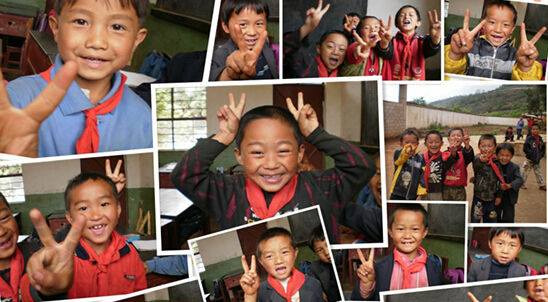Editor's note: The National People's Congress (NPC), China's top parliamentary body, and the Chinese People's Political Consultative Conference (CPPCC), China's top political advisory body, convene its annual sessions, known as the "two sessions" on March 3-15, 2016, which marks a pivotal year as the nation continues on to embark with its reforms and opening up policy, shifting towards a "New Normal" for economic growth rates, starting its 13th Five-Year Plan for social and economic development over the next five years and confronting challenges on the foreign policy front. How will the NPC address those concerns? What do foreign experts and Overseas Chinese say? The Panview Column of CNTV has invited some of them to express their views on major issues to be discussed at the ongoing two sessions.
Speaking at the annual session of the National People's Congress (NPC), China's top parliamentary body, Premier Li Keqiang said that the nation wants to eliminate poverty by 2020. With more than 70 million Chinese living below the poverty line—an annual income of 2,300 RMB (about U.S. $350)—it appears an extremely difficult target to reach. [Special coverage]

But having reduced its extreme poverty rate from 84 percent in 1980 to approximately 10 percent by 2013, China has an enviable track record of meeting tough targets and has a greater history of poverty alleviation successes than any other nation in the world. Between 1980 and 2005, China's progress alone accounted for about 70 percent of the overall global decline in poverty.
China's incredible achievements in reducing poverty are often traced back to the reform and opening up strategy initiated at the third plenum of the 11th Communist Party of China Central Committee in 1978. In particular, the de-collectivization of the nation's agriculture is widely regarded as crucial; by allowing for local conditions and local initiative, production efficiency was increased.
And reforms also gave more freedom to rural dwellers, allowing them to open small businesses and gain a degree of financial independence. Rural residents also became more exposed to and appreciative of education, enabling them to develop their skills and expertise, which in turn reduced dependence on the state.
Historically, China's rural areas were the most impoverished parts of the country, but the CCP has long encouraged and facilitated rural to urban migration under an "urbanization" plan, largely by providing a subsidy for urban residents to lift their annual incomes to about U.S.$700.
As many people of working age left rural areas to seek employment in towns and cities, the Party has tried to minimize poverty among those who remain in the countryside and small villages by implementing a rural pension scheme.
Despite such vast progress in the past 40 years, major challenges remain. China faces a widening wealth gap, particularly between urban and rural residents; it has many outdated and bloated state-run enterprises, such as coal mines and steelworks; and the nation is attempting to eradicate poverty during its slowest rate of economic growth for the past 20 years.
Moreover, as China moves forward with a nationwide urbanization plan, there are new challenges, such as the lack of jobs and problems with building quality in newly-created and newly-developed urban areas.
But perhaps the most significant achievement is that China has already overcome many of the simplest challenges in tackling poverty. Many Chinese who were just below the poverty line have since been helped over it.
And though in the past China could target its poverty reduction efforts to geographical regions, this is no longer feasible because poverty has become more geographically dispersed.
With such stark challenges on the horizon, poverty alleviation has been high on Premier Li's agenda at the ongoing two sessions, and he has announced several key measures to aid China's bid to eliminate poverty.
Li said Beijing intends to increase poverty alleviation funding by 43.4 percent; build or upgrade 200,000 kilometers of rural roads; and work toward reducing excess food stockpiles.
In addition, one of the most significant developments during the annual political season has been the draft of China's first charity law. Philanthropy has rapidly gained momentum in the nation over the past decade, growing from 10 billion RMB (about U.S.$1.5 billion) in 2006 to 100 billion RMB (U.S.$15 billion) in 2014.
The new charity bill would encourage more charity donations by allowing more charities to receive donations from the public. Currently, there are few charity organizations—such as the the Red Cross Society of China—that are allowed to raise donations from the public; others can only raise funds from a specific group of donors.
The bill also include policies to incentivize donations, such as tax deductions, and it seeks to ensure greater trust by improving charitable organizations' management structures, setting guidelines for information disclosure, and eliminating corruption.
Throughout China's struggles to tackle poverty, charity has been an untapped resource. But Li Jianguo, vice chairman of the National People's Congress (NPC) Standing Committee, said charitable programs will be "indispensable" in the future fight against poverty.
Though China has an incredible history of poverty alleviation success, as Premier Li and delegates at the two sessions focus on eliminating poverty, they will be aware that some of the most complex and stubborn obstacles are still to come.
About the author: Colin Robinson is an experienced writer and editor. He has a bachelor's degree in government and politics from Newcastle University and a master's degree in online journalism from the University of Sheffield.


















































